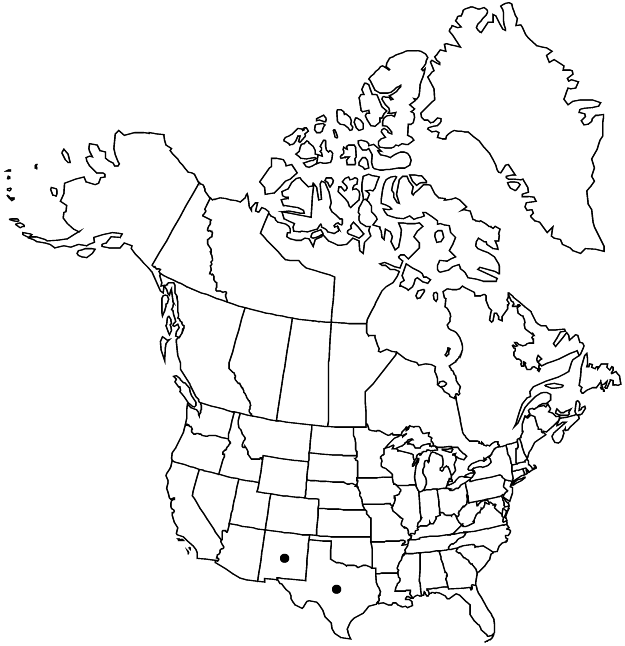Cerastium axillare
Brittonia 18: 308. 1967.
Plants annual, viscid. Stems usually erect, simple or several-branched, from branched caudex, rarely bushy, 6–40 cm, glandular-pilose, hairs in mid-stem region equaling or longer than stem diam.; small axillary tufts of leaves absent Leaves sessile; blade 7–25 × 1–6 mm; basal rosette absent or poorly developed and withering when young; proximal with blade oblanceolate to spatulate; distal with blade linear-lanceolate or lanceolate to narrowly elliptic, apex usually acute, rarely obtuse, glandular-pilose. Inflorescences diffuse, elongate, usually with single dichotomy at or below mid stem, 3–18-flowered cymes, glandular-pubescent, flowers widely and racemosely spaced in axils of paired bracts along each branch; bracts herbaceous, lanceolate, glandular-pubescent. Pedicels sharply curved just below capsule, 2–10(–15) mm, shorter than to 2 times as long as capsule, with dense, patent, glandular pubescence. Flowers: sepals lanceolate, 3–5 mm, apex acute, glandular-hispid, hairs not extending beyond sepal tips, inner sepals with broad margins, outer sepals with very narrow margins; petals oblanceolate, 2–3 mm, shorter than sepals, apex 2-fid ca. 1/4 of length; stamens 5; styles 5. Capsules narrowly cylindric, curved, 7–8.5 mm, ca. 2 times as long as sepals; teeth 10, erect, margins convolute. Seeds light brown, 0.4–0.7 mm diam., tuberculate; testa not inflated.
Phenology: Flowering summer.
Habitat: Rocky canyons, woodland and mountain slopes
Elevation: 1300-2800 m
Distribution

N.Mex., Tex., Mexico.
Discussion
Cerastium axillare is similar to C. brachypodum in its short pedicels, but it is more viscid-pubescent, with a much more diffuse habit and solitary flowers widely spaced along the elongate, racemelike primary branches of the inflorescence. In addition, the leaves are usually acute, whereas in C. brachypodum they are usually obtuse. Cerastium axillare is confined in the United States to the trans-Pecos mountains of Texas and New Mexico.
Selected References
None.